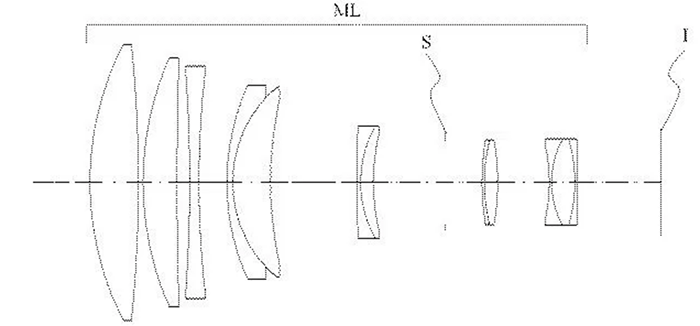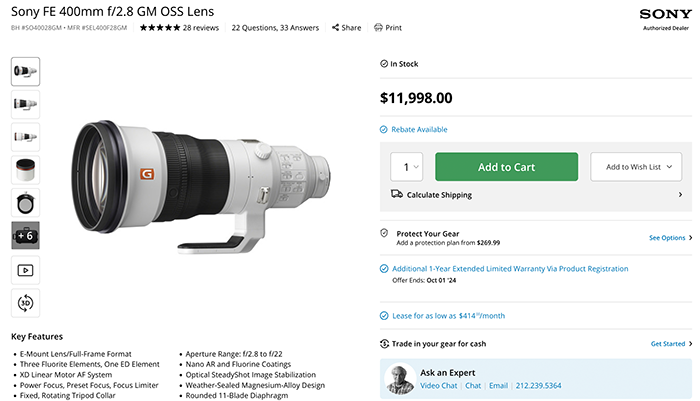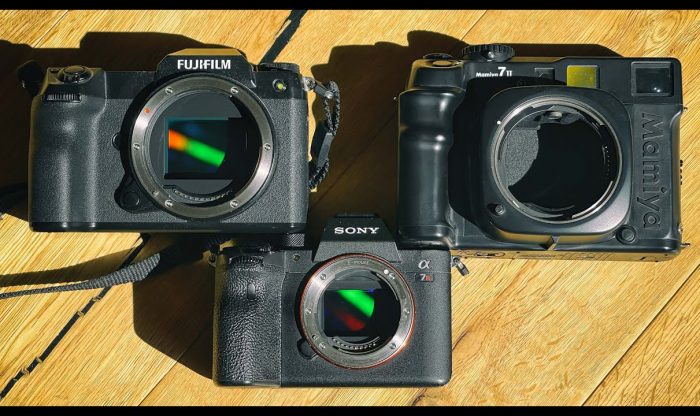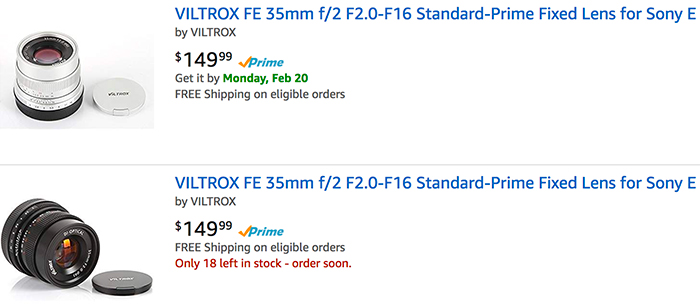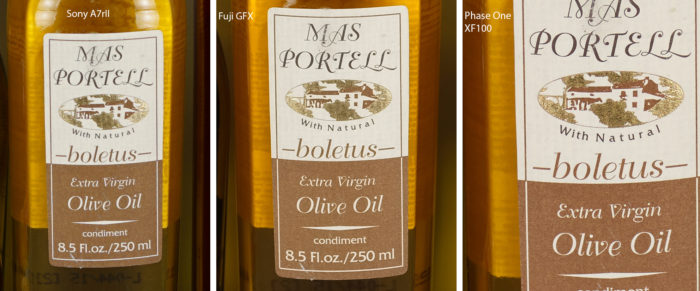Sony A6500 review by Max Galer, Tony Northrup and ePhotozine
We got two new A6500 reviews. On top you can watch Marc Galer’s video review. And ePhotozine posted the full text review and concludes:
Ignoring the price, the Sony Alpha A6500 offers a wide range of features, including excellent image quality, fast focusing and continuous shooting, all in a compact camera body, with good build quality. There’s also a good range of lenses available. We’re not really a fan of the menu system update, but saying that, there are worse menu systems out there, and it shouldn’t take long for users of this camera to get used to it.
Sony A6500 at [shopcountry 55972]
And here is Tony Northrup take on the A6500
First Image Quality comparison between the Fuji GFX (Sony 50MP sensor) and the Sony A7rII
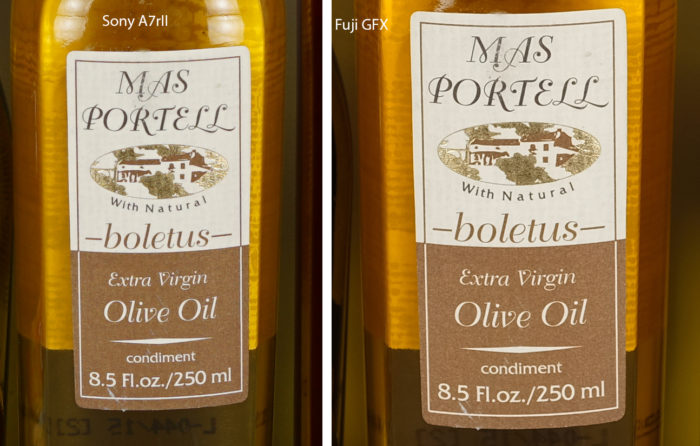
A7rII vs GFX ISO 100 comparison at 100% enlargement (Click on the image to see the orioginal size).
I guess you were all curios to see if the 1.7 times larger Sony 50MP sensor of the Fuji GFX can easily beat the Sony A7rII image quality. Well now you can use the Imaging Resource Comparometer to make all the comparison you want as they just added the GFX Lab shots. Imaging Resource writes:
“This camera produces the best lab shots we’ve ever come across. Detail is fantastic, and high ISO performance is excellent.”
Here are a couple of short links to some of the full size images:
100 ISO: GFX vs A7rII
1600 ISO: GFX vs A7rII
It really comes down to very personal professional needs if the GFX advantage justifies the very high price of the camera. If you ask me I would like Sony to make a medium format camera with 55x41mm sensor. I think the image quality difference with FF would be really make a huge difference. But so would be the price :)
Here is the 100% enlarged 100 ISO comparison with the Phase One XF100 that uses the 55x41mm Sony 100 megapixel sensor (Click on image to see full size version):
First full size image samples shot with the new Voigtlander 40mm f/1.2 and 65mm f/2.0 FE lenses
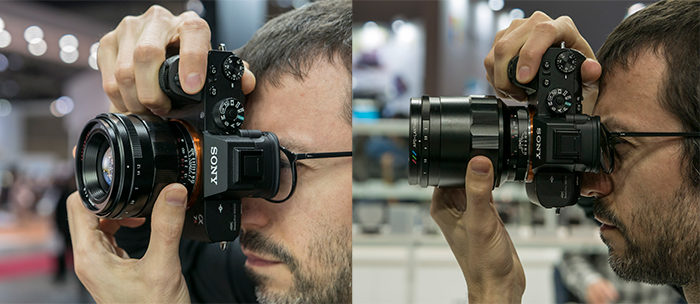
DSLmagazine shared the first set of full size image samples you can download here:
40mm f/1.2 FE at DSLR magazine (Click on the thumbnails).
65mm f/2 FE at DSLR magazine (Click on the thumbnails).
 Imagen tomada con Voigtländer Macro APO-Lanthar 65 mm f/2 a f/2 – 1/80 s – ISO 320 © Albedo Media Imagen tomada con Voigtländer Macro APO-Lanthar 65 mm f/2 a f/2 – 1/80 s – ISO 320 © Albedo Media |
 Imagen tomada con Voigtländer Macro APO-Lanthar 65 mm f/2 a f/4 – 1/80 s – ISO 1.250. © Albedo Media Imagen tomada con Voigtländer Macro APO-Lanthar 65 mm f/2 a f/4 – 1/80 s – ISO 1.250. © Albedo Media |
 Imagen tomada con Voigtländer Macro APO-Lanthar 65 mm f/2 a f/2 – 1/80 s – ISO 125 © Albedo Media Imagen tomada con Voigtländer Macro APO-Lanthar 65 mm f/2 a f/2 – 1/80 s – ISO 125 © Albedo Media |
 Imagen tomada con Voigtländer Macro APO-Lanthar 65 mm f/2 a f/4 – 1/80 s – ISO 500. © Albedo Media Imagen tomada con Voigtländer Macro APO-Lanthar 65 mm f/2 a f/4 – 1/80 s – ISO 500. © Albedo Media |
DSALRmagazine writes that they like the bokeh and the contrast of the 40mm lens. The 65mm has beatiful bokeh but it has some chromatic aberrations.
What are your thoughts on these lenses so far?
New 100mm STF and 85mm f/1.8 FE lens tests
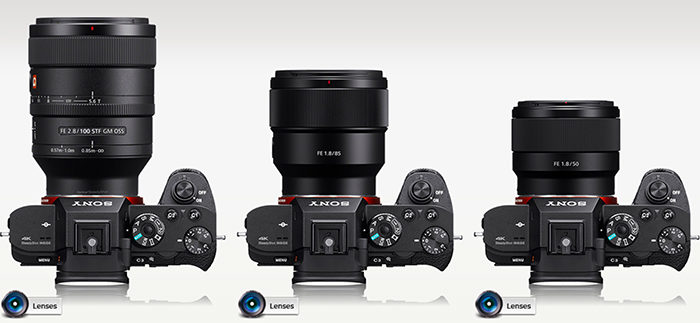
Sony 85mm f/1.8 first look by Imaging Resource:
It’s amazingly comfortable and lightweight considering what you’re getting in return. Significantly lighter than traditional 85mm f/1.4 lenses, it even sports a convenient “focus hold” button (more on that in our forthcoming review). And the beefier hand grip of the A7 Mark II as compared to the original A7 is a big bonus with a lens like this, making for a well-balanced combination.
Sony FE 85 mm f/1.8 – “günstiges” Portrait-Objektiv für Sony FE im Hands-On Test (ValueTechTV).
Sony STF test at Techbang.com
New Sony FE lens preorder links:
85mm f/1.8 FE at Amazon, BHphoto, Adorama. Amazon DE. Amazon UK. Amazon IT. Amazon FR. Amazon ES. PhotoPorstNeuwied.
100mm f/2.8 STF FE at Amazon, BHphoto, Adorama. Amazon DE. Amazon UK. Amazon IT. Amazon FR. Amazon ES. PhotoPorstNeuwied.
HVL-F45RM Wireless Radio Flash at BHphoto, Adorama. PhotoPorstNeuwied.
First look at the Sony XZ Premium camera features and the new Fuji 50-135mm T2.9 E-mount lens
Dave Newton takes a look at the SONY XZS and XZ Premium phones at MWC 2017 in Barcelona. These phones are able to shoot 720p at 960fps for super-slow motion video effects
And Newsshooter had the chance to see the new Fuji 50-135mm T2.9 E-mount lens:
Sony 70-200mm GM teardown at Lensrentals
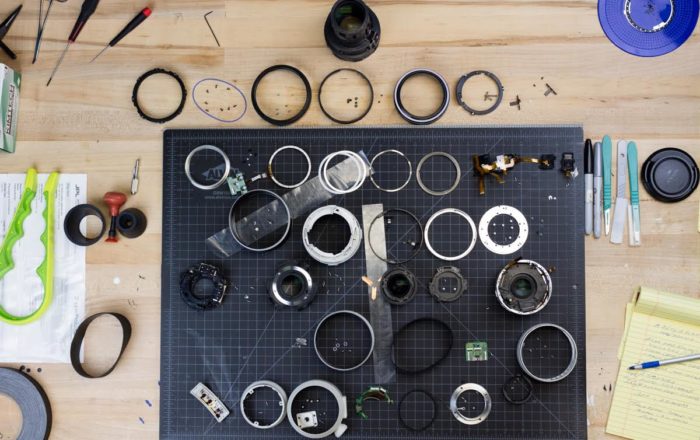
This is how the 70-200mm GM looks in pieces
Lensrentals dismantled the Sony 70-200mm FE GM lens and those are their findings:
- The Sony 70-200mm f/2.8 GM has a lot of solid construction with heavy metal barrels and proper weather sealing.
- The rollers, cams, and screws seem appropriate for what they do. They aren’t over-engineered by any means, but certainly adequate.
- The lens is designed to take apart in the middle. That’s really different for a 70-200 f/2.8, but we’ve seen some super telephoto lenses that are similar. I doubt it’s going to break in half if you drop it. Or more to the point, if you drop it hard enough to break it in half, other stuff would be breaking too.
- There’s a lot of impressive engineering in here, but not what we (from a take-it-apart perspective) would call elegant. It looks similar to a Nikon design, which isn’t a bad thing, Nikon makes lots of great lenses. That are a pain to work on. Pain to work on often (but not always) translates into expensive to repair.
Photographyblog reviewed the lens and the conclusion is:
The Sony FE 70-200mm F2.8 GM OSS is an oustanding telephoto zoom lens for Sony’s full-frame compact system cameras, although there’s a high price to pay for such quality. It delivers outstanding sharpness in the centre of the frame almost throughout its entire aperture and zoom range, also performing very well wide-open at f/2.8, although you’ll need to stop down to f/4 to get similar quality at the edges of the frame. The Sony FE 70-200mm F2.8 GM OSS lens offers very fast and reliable auto-focusing on the A7R II camera that we tested it with, plus intuitive manual focusing, lovely bokeh, built-in 5-axis image stabilisation and stellar build quality – it’s even usefully weather-tight too. The only real downsides are that sky-high asking price and the very large size and weight, although both are typical of an f/2.8 full-frame lens like this. If you need the best telephoto zoom for Sony full-frame mirrorless cameras, we’d definitely recommend the new Sony FE 70-200mm F2.8 GM OSS lens.
Sony 70-200mm GM at [shopcountry 54535].
